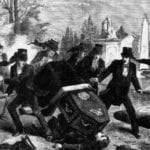 Music
Music  Music
Music  History
History 10 Less Than Jolly Events That Occurred on December 25
 Weird Stuff
Weird Stuff 10 Funny Ways That Researchers Overthink Christmas
 Politics
Politics 10 Political Scandals That Sent Crowds Into the Streets
 Weird Stuff
Weird Stuff Ten Bizarre Facts About The Doge Meme
 Our World
Our World 10 Ways Your Christmas Tree Is More Lit Than You Think
 Movies and TV
Movies and TV The 10 Coolest Stars to Set Sail on The Love Boat
 History
History 10 Things You Didn’t Know About the American National Anthem
 Technology
Technology Top 10 Everyday Tech Buzzwords That Hide a Darker Past
 Humans
Humans 10 Everyday Human Behaviors That Are Actually Survival Instincts
 Music
Music 10 Surprising Origin Stories of Your Favorite Holiday Songs
 History
History 10 Less Than Jolly Events That Occurred on December 25
 Weird Stuff
Weird Stuff 10 Funny Ways That Researchers Overthink Christmas
Who's Behind Listverse?

Jamie Frater
Head Editor
Jamie founded Listverse due to an insatiable desire to share fascinating, obscure, and bizarre facts. He has been a guest speaker on numerous national radio and television stations and is a five time published author.
More About Us Politics
Politics 10 Political Scandals That Sent Crowds Into the Streets
 Weird Stuff
Weird Stuff Ten Bizarre Facts About The Doge Meme
 Our World
Our World 10 Ways Your Christmas Tree Is More Lit Than You Think
 Movies and TV
Movies and TV The 10 Coolest Stars to Set Sail on The Love Boat
 History
History 10 Things You Didn’t Know About the American National Anthem
 Technology
Technology Top 10 Everyday Tech Buzzwords That Hide a Darker Past
 Humans
Humans 10 Everyday Human Behaviors That Are Actually Survival Instincts
10 Noteworthy Sibling Rivalries Through History
Siblings fighting and bickering is as natural and expected as the sunset. However, most fraternal rivalries remain a private affair. Only a select few have gone on to have their squabbles on display for the whole world to see.
10Houdini And Hardeen

Harry Houdini was one of the greatest magicians of all time. His younger brother, Hardeen, however, isn’t so well remembered today, even though he enjoyed a longer career than Houdini and at one point, did all the illusions made famous by his brother.
The brothers started their act together as teenagers, performing at Coney Island as “The Brothers Houdini.” When Harry branched off and found success as a solo performer, his younger brother Theodore adopted the name “Hardeen” because he felt it sounded similar.
Houdini was quite protective of his act, and Hardeen was the only one he would allow to copy his illusions. Oftentimes, their competitiveness brought out the best in both brothers. For example, the straitjacket escape was one of Houdini’s most popular tricks, and Hardeen naturally did his own version. However, Hardeen one-upped his brother when he became the first to do the trick in view of the audience instead of behind a screen. Then Houdini took it one step further and started doing the trick while hanging from a crane.
This sibling rivalry was strictly professional. There was never any animosity between the brothers. In fact, after his death, Houdini bequeathed all of his stage props and effects to Hardeen and allowed him to use Houdini’s former illusions. In return, Hardeen named one of his sons Harry in honor of his brother.
9Dave And Ray Davies

Brothers Dave and Ray Davies were the driving force behind one of the most influential bands in rock history—The Kinks. They formed the band in 1963 and struck it big one year later with their best-known single, “You Really Got Me.”
That song was hugely popular and went on to have a lasting impact on the industry. Besides having a unique sound, “You Really Got Me” was one of the first songs to feature guitar distortion, and it paved the way for later genres such as heavy metal and punk rock. It also created a rift between the Davies brothers as they argued over who actually created the sound.
The story that went around for the longest time was that Ray Davies created the band’s distinct sound by stabbing an amplifier with a knitting needle. However, Dave disputed this claim by asserting that he came up with the fuzztone by slashing his amp with a razor blade in a fit of frustration.
The rivalry between the brothers reached a fever pitch during the ’90s, when both published their autobiographies. First off, in 1995, Ray wrote his autobiography, which caused the band to go on hiatus while he did a solo tour to promote it. In 1996, The Kinks broke up. One year later came Dave’s autobiography, where he accused his brother of stealing writing credits to deny him royalties.
8Leo And Ron Gallagher
For people who have never seen his act, Gallagher is simply “that comedian who smashes watermelons.” A prop comic who started out in the 1970s, Leo Gallagher (referred to simply by his last name) became a huge hit in the 1980s and is still touring to this day. His signature routine was the “Sledge-O-Matic,” where he would use a giant mallet to smash various objects, most famously a watermelon.
During the ’90s, his younger brother Ron wanted to use the family name and the similarity between the two brothers and asked to borrow Leo’s signature routine. He said yes, as long as Ron stuck to playing small venues that Gallagher wouldn’t touch with a 16-pound mallet.
And so, Ron began performing as “Gallagher II.” This was a problem, since Leo made it clear that Ron should make no attempt to insinuate or imply any connection between his show and Gallagher. Later, Ron even suggested that the brothers came up with a routine similar to “Sledge-O-Matic” together when they were younger.
Things came to a head when Ron booked a big Millennium Eve gig at the Fisher Theatre in Detroit. After that, Leo sued him for trademark violations. Although the courts sided with him, their parents took Ron’s side.
7James And William Terrill
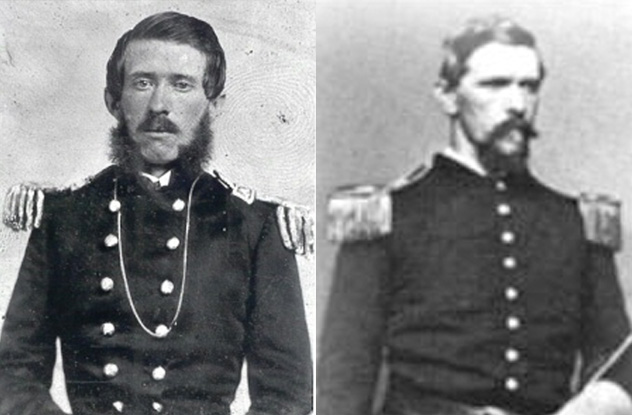
The Civil War divided many families. It was not uncommon for brothers or even fathers and sons to fight on opposite sides of the war, either due to geographical or ideological differences. Most notable were James and William Terrill, two brigadier generals who died in the Civil War, fighting for the Confederacy and the Union, respectively.
A prominent Virginia family, the Terrills were Confederates through and through. The father, Colonel William H. Terrill, and three of the sons fought for the Confederacy during the war. His son, James, was a lawyer who graduated from the Virginia Military Institute. He distinguished himself in several high-profile battles like the Battle of First Manassas and the Battle of Fredericksburg. This earned him promotions first to major then to lieutenant colonel. He died in action on May 30, 1864, the same day his nomination to brigadier general was confirmed.
William R. Terrill was the only member of the family who sided with the Union. For this, he was completely disowned by his family. However, he never met any of his siblings in combat as they all fought in the Eastern Theater, so he went west. In September 1862, William was promoted to brigadier general after his success at the Battle of Shiloh and was killed in action a month later at the Battle of Perryville, Kentucky.
6Jimmy And Billy Carter
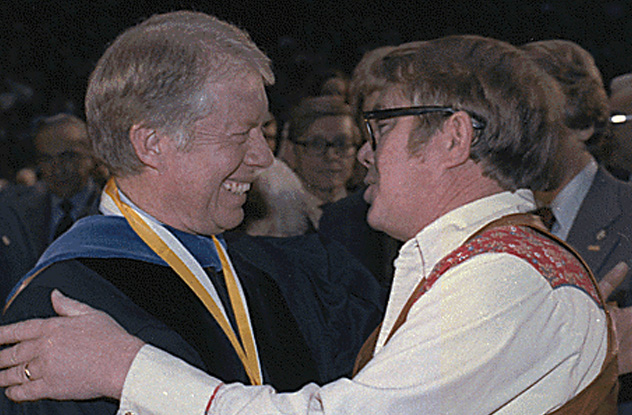
Many people have to deal with an embarrassing little brother, but President Jimmy Carter had to do it with the eyes of the entire world on him. However, their rivalry started way before Carter’s presidential run.
Born 13 years apart, Jimmy and Billy had vastly different childhoods. A product of a strict upbringing, Jimmy joined the Navy when Billy was six. In the meantime, their father mellowed out, and Billy enjoyed a more lenient upbringing. After his father died, Billy assumed the family business would go to him, but big brother Jimmy returned from the Navy to take over. Angered by this, Billy dropped out of school and joined the Marines, although after a few years, he reluctantly had to return to work for his brother.
By this time, Jimmy’s political career was taking off, and when he became governor, Billy was fully in charge of the family businesses. When Jimmy Carter ran for president, the media descended on his hometown to find out more about the Democratic candidate and fell in love with baby brother Billy. Described as a “professional redneck,” Billy’s demeanor helped endear Jimmy Carter to the public. This is also when Billy Carter came out with Billy Beer, a brew so bad even he admitted he didn’t drink it.
Billy’s folksy appeal stopped suddenly when he became involved in several scandals—one for taking money from the Libyan government and another for not paying taxes. These scandals contributed to Carter’s hugely unsuccessful 1980 reelection campaign.
5Mary And Anne Boleyn
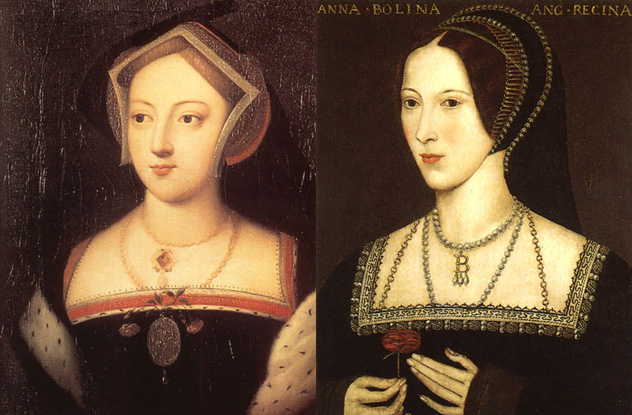
Anne Boleyn left an indelible mark on Europe’s history. She was the second wife of Henry VIII. but one could argue that she was far more important than any of the others. For starters, her refusal to become the king’s mistress only made him want her more to the point where Henry took control of the Church of England and broke off from under Roman influence just because Pope Clement VII wouldn’t annul his first marriage. Furthermore, even though Anne’s inability to produce a male heir for the king would be her undoing, her daughter Elizabeth would eventually become queen and have one of the longest reigns in England’s history.
The rivalry between the sisters started at an early age. Although they came from a respected family, their father, Sir Thomas Boleyn, knew that opportunities for social advancements would not be presented equally. Indeed, this turned out to be the case when he had to choose which daughter to send as a maid of honor to the Archduchess Margaret of Austria. He eventually chose Anne.
Mary Boleyn made her way to the French court, where she became the mistress of King Francis I. Upon her return to England, she also became the mistress of Henry VIII years before his marriage to her sister. This bizarre love triangle would eventually be the main reason why Henry and Anne’s marriage was annulled by the Church. It also sparked rumors, such as Mary bearing two children for Henry whom he never acknowledged.
4Caracalla And Geta
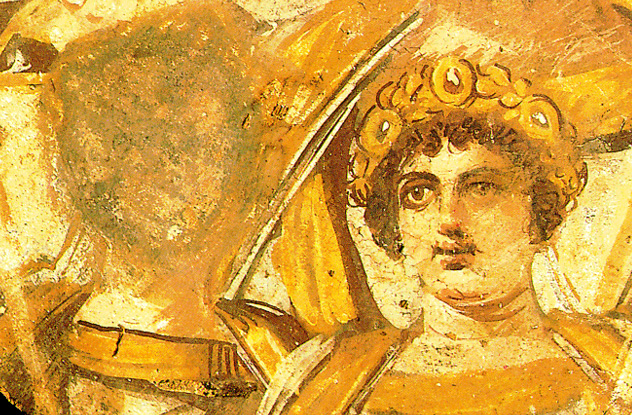
Caracalla and Geta were the sons of Roman emperor Septimius Severus and Julia Domna. The older of the two, Caracalla started ruling in the year 198 at the age of 10, when his father made him his co-ruler. According to historians such as Dio and Herodian, Caracalla was never big on sharing and even in his youth tried to attain sole leadership by assassinating his father.
When Severus finally died in 211, he made both his sons co-emperors in an attempt to bring them together. However, this had the opposite effect. Caracalla and Geta had been at odds for all of their lives, and giving both of them equal and immense power didn’t help matters. At first, they merely bickered over every decision to the point where they divided the imperial palace so as to avoid meeting each other. The brothers also tried to kill each other by poisoning each other’s food.
Eventually, the brothers saw no other alternative other than to split the Roman Empire in half. Geta would rule the eastern part, consisting of parts of Asia and Egypt, while Caracalla would rule over Europe and Africa. In the end, though, Caracalla’s greed got the better of him. He decided the simplest solution was to kill his brother and rule by himself. His solo reign was marked by massacres and numerous persecutions of his subjects until Caracalla was murdered by his Praetorian Guard in 217.
3Jimmy And Larry Flynt
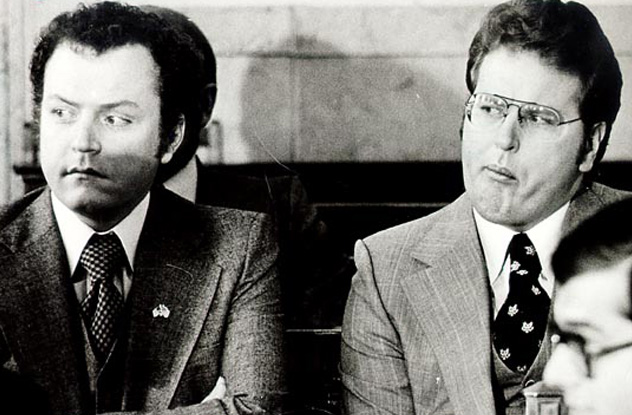
Although Larry Flynt has always been the prominent face of the Hustler empire, his brother Jimmy has been right there beside him ever since the two started Hustler together. They undertook multiple business endeavors together and faced numerous legal battles, particularly related to obscenity charges.
However, their relationship ended abruptly in 2009 when a spat between brothers led to Larry Flynt firing Jimmy from his position with the Flynt Management Group. A wrongful termination lawsuit soon followed against Flynt’s company as well as against a law firm that allegedly colluded with Larry Flynt to push Jimmy out of the company. According to Jimmy Flynt, he came up with the Hustler marketing tagline “Relax . . . it’s just sex!”, as well as the profitable Hustle retail division. He was seeking at least $20 million compensation.
This wasn’t the first time the brothers had a falling-out. They barely spoke to each other between 1984 and 1989. Larry then rehired his brother, allegedly making him a promise of “lifetime employment” before firing him later in 2009. Since there was no written contract, a judge sided with Larry Flynt.
2The Andrews Sisters
Although the Andrews Sisters aren’t a common household name today, they were, at one point, the most successful music group in the world. Active for five decades between the 1920s and 1960s, the sisters are predominantly remembered for hits such as “Boogie Woogie Bugle Boy,” “Beer Barrel Polka,” “Shortenin’ Bread,” and their debut Yiddish hit “Bei Mir Bist Du Schon.” However, while the three sisters publicly displayed a collective sunny and cheerful disposition, in private, Patty, Maxene, and LaVerne weren’t really the best of friends.
As far as the reason for the rift between them goes, Maxene simply blamed it on working very close together for far too many years. To her, it felt like they were glued at the hip. For the first decades of their careers, they were also constantly monitored by Mama and Papa.
Eldest sister LaVerne was the one struggling to keep things friendly in the group, but she died much earlier than her sisters in 1967. After that, the relationship between Maxene and Patty got colder and colder. They last performed together in 1974 in a Broadway show. After that, the sisters only saw each other once more in 1982, when Maxene was hospitalized after a heart attack. When asked what the problem between the sisters was, Patty was much more blunt and succinct—“Maxene.”
1Cleopatra And Ptolemy XIII

Cleopatra is remembered as one of ancient Egypt’s greatest rulers. Her brother Ptolemy XIII? Not so much. The two of them were supposed to rule together. They succeeded their father Pharaoh Ptolemy XII to the throne in AD 51 and became co-rulers through marriage. However, since Ptolemy was still too young, the eunuch Pothinus acted as regent on his behalf and also became his trusted adviser.
Cleopatra proved to be a popular queen, and her status with her subjects kept rising. Just a few years into his rule, Ptolemy tried to depose her to become sole ruler, but this triggered a civil war. Eager to get the support of Rome, Ptolemy tried to gain favor with Julius Caesar by presenting him with the head of his enemy Pompey. However, the plan backfired, as Caesar found the gesture distasteful and instead decided to reconcile the two siblings and have them co-rule as was stipulated in their father’s will.
Eventually, Cleopatra gained the upper hand by seducing Caesar and having a child with him. Ptolemy attempted a rebellion but died in it, and Cleopatra became co-ruler with a younger brother, Ptolemy XIV. After a few years, this Ptolemy would also die. It has been theorized that Cleopatra killed him as well, to have her son by Caesar next in line for the throne. To complete her fratricide set, Cleopatra would later kill her half-sister Arsinoe, whom she saw as a further threat.
Radu is a history/science buff with an interest in all things bizarre and obscure. Share the knowledge on Twitter or check out his website.
